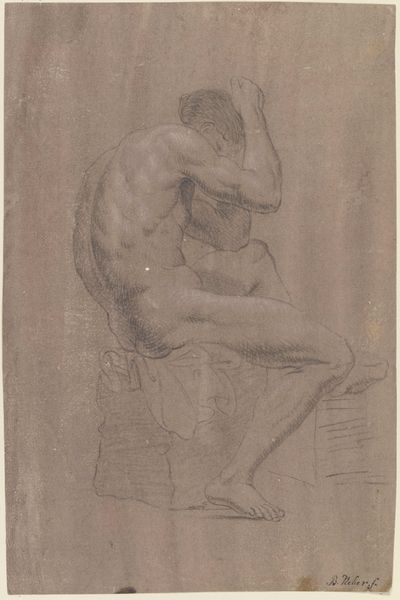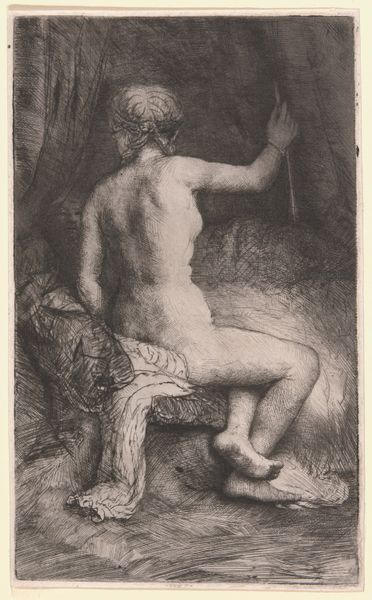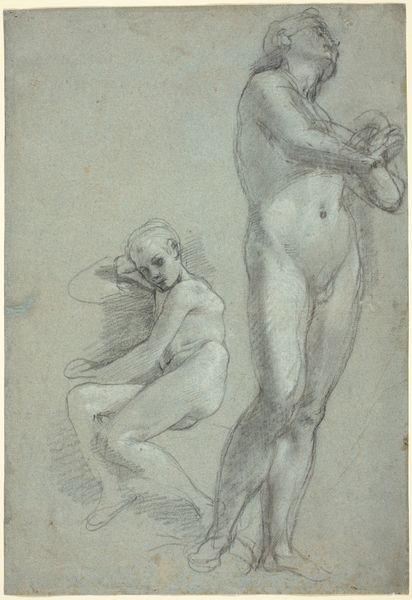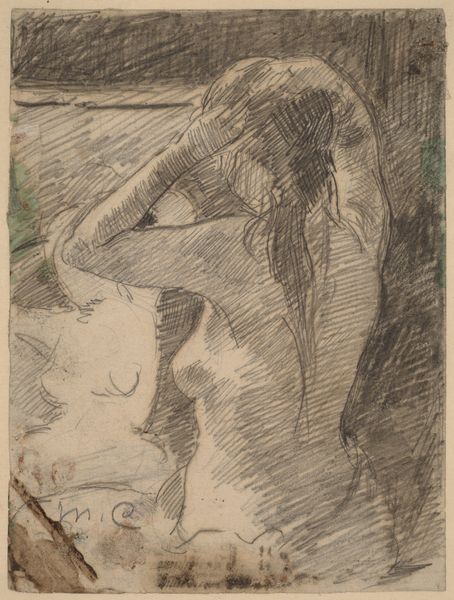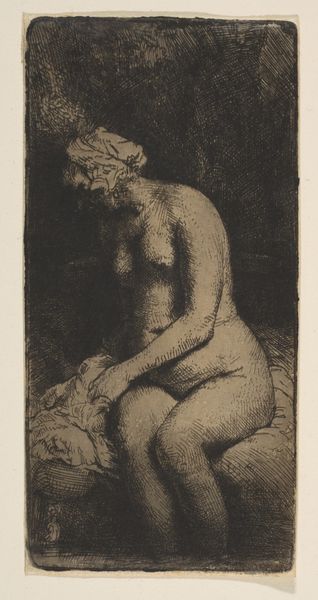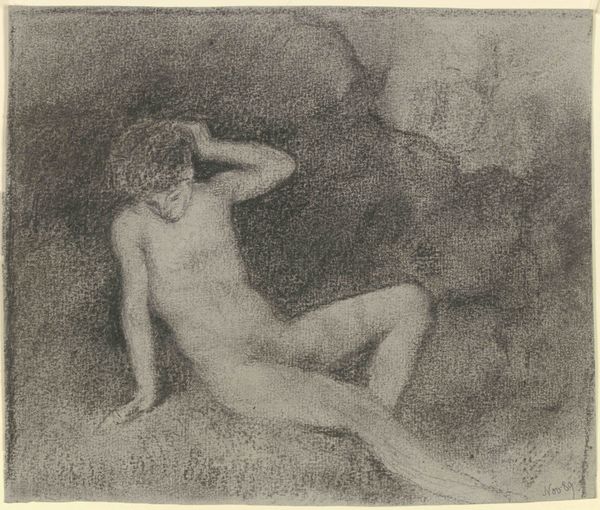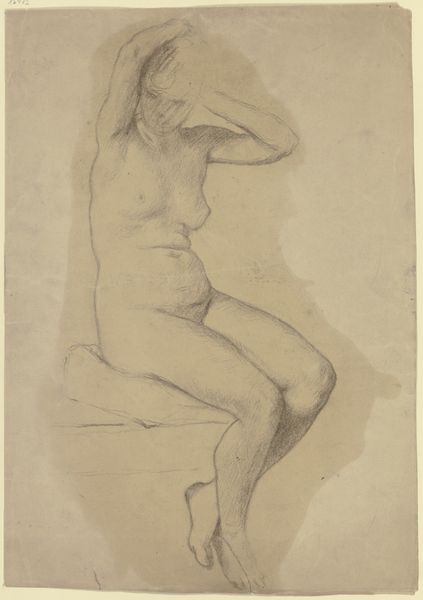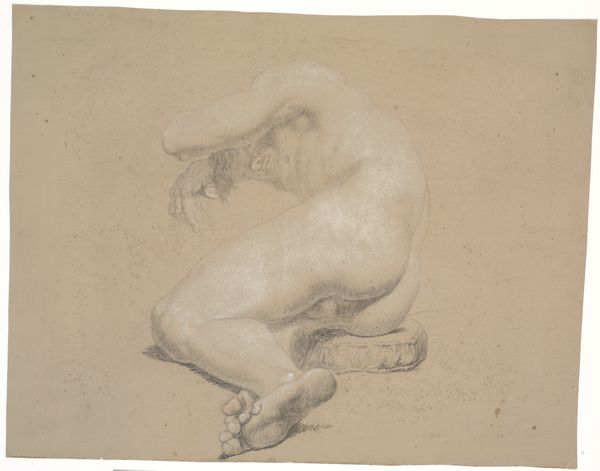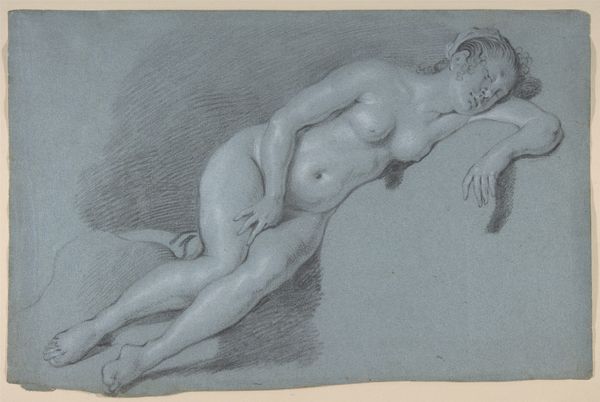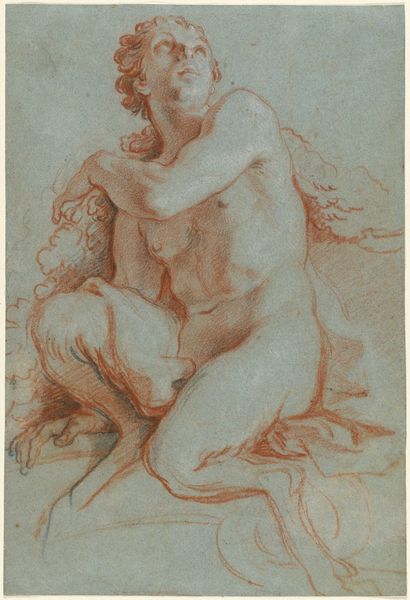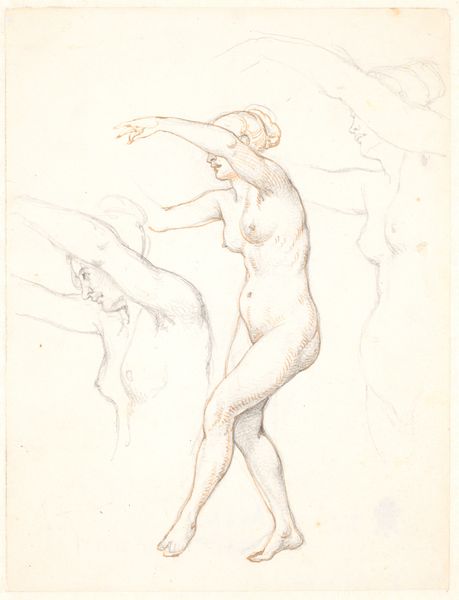
Copyright: Public Domain
Curator: Otto Scholderer's "The Nymph," created in 1882, draws us into a quietly captivating scene. Executed with charcoal and pastel on paper, the piece currently resides here at the Städel Museum. Editor: My first impression is one of subdued longing. The figure’s posture speaks volumes, doesn't it? Almost as if she's weighed down, caught between worlds. Curator: Absolutely. Scholderer taps into the romantic fascination with mythical figures, imbuing them with very human emotions. The nymph, a guardian of nature, here appears vulnerable, even weary. Do you feel the romantic influences at play here? Editor: I do. There's that distinct 19th-century melancholy and idealization of the natural world combined with this almost clinical study of the human form. Where do you see those traditions fitting into the larger political and social contexts of 1880s Germany? Curator: Well, Germany during the 1880s was navigating rapid industrialization and urbanization, which inevitably brought about nostalgia for an idealized rural past. The nude female form, often depicted in classical or mythical settings, became a visual retreat—a rejection of the growing modern, industrialized world. Also, the representation of female figures was fraught with issues of gender roles, ownership, and viewership in that time period. This feeds into larger dialogues in art, where we continue to dissect how images both affect and reflect their current moment. Editor: The pastel medium lends itself perfectly to that ethereal, almost dreamlike quality. But looking closer, there's also a very raw, almost sketch-like element, particularly in the background, what sort of role might this aesthetic quality play? Curator: I'd suggest that that element serves as a subtle reminder of the inherent transience of beauty and the vulnerability of the natural world and its supposed "guardians." And given Scholderer’s commitment to Realism, the lack of idealization lends authenticity. Editor: A fitting image for the moment we are now living in. Considering our world's current trajectory, what enduring impact might art like this carry for viewers into the future? Curator: Art holds cultural memory. Pieces like this offer us continued reflection on how humanity understands and positions itself vis-à-vis the environment and our internal lives. Editor: Indeed. It's a reminder of both the timelessness and the urgency of these questions.
Comments
No comments
Be the first to comment and join the conversation on the ultimate creative platform.
